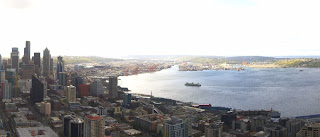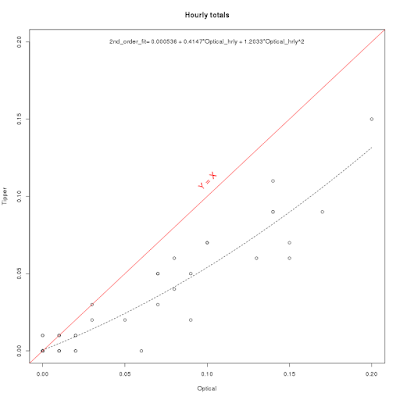During virtually every major windstorm that has hit our region, someone has died from a falling branch or trunk. The chances of being a victim in any particular windstorm is
extraordinarily low, but with millions of people in our region going about their daily lives, someone inevitably gets hit.
For the recent March 13th storm, the death was a man in Seward park. For the November 17th windstorm, 3 people were killed by falling trees. Today, the front page of the Seattle Times had a story criticizing the Seattle Park's Department, suggesting that they should have shut down Seward and other parks.
So lets examine this threat and what you can do to protect yourself. First, whether trees or branches come down is more complicated than just wind.
1. Early season storms do much more damage for the same wind speed. Leaves on the trees dramatically increase the drag and spring/summer growth has been untested by strong winds. Our August windstorm was a great example of this, producing some of the worst tree damage in our region's history.
2. Extreme dry conditions over the summer can make the trees more vulnerable. That probably contributed to the extraordinary damage of the August storm.
3. Very wet soils reduce the adhesion of roots to the soil and soften the soil, making tree fall more likely. This was clearly a factor for the March 13th storm, which followed the wettest winter in Seattle history.
4. Exposure is very important. Winds are stronger near hill tops and downstream from water. Wind blows more strongly over water since it is aerodynamically smooth, so being near the Sound or Lake Washington can bring increased devastation. This certainly contributed to the tree fall in Seward Park, since it sticks out into Lake Washington.
As a general rule of thumb, falling branches can start occurring when winds start gusting above 30 mph and major tree damage occurs above 40 mph.
How to protect yourself!
Not a tree expert? You can start by following the National Weather Service weather forecast--for the March 13 event they predicted strong winds and mentioned to keep away from tall trees.
But if you are more of a hands-on type of person, why not use the wind tool used by the professionals at Seattle City Light? A web page they funded, created by my group (particularly Jeff Baars) at the University of Washington is available to all:
Seattle WINDWATCH?
WindWatch accesses the most skillful local weather forecast models and the latest National Weather Service forecasts, telling you whether strong winds are coming. It plots the current wind speeds. Check out the
website and its substantial capabilities.
Have you ever noticed that Seattle City Light seems to restore power much more quickly than other local utilities? One reason is that armed with the information form WindWatch they can stage their personnel and supplies better.
So if winds over 30 mph are being forecast and you want to minimize your risks (still very small), you would be wise to keep away from heavily wooded areas. High on the list is the Burke Gilman trail (where I almost got killed last year!) Tree-filled parks near the water are also dangerous in strong wind conditions (e.g., Lincoln Park, Carkeek Park, Seward Park).
Not a good idea during a windstorm
The stronger the winds and the earlier in the season and the wetter the ground, the more you should avoid trees. Schools should keep students in the buildings when strong winds blow, even if the power fails. Don't send them home. A famous story is how Seattle high schools released their students during the height of the Inauguration Day Windstorm (January 20, 1993) because the schools had gone dark. Very bad move.
If it gets windy and you have a big fir to the south of you, sleeping in a second story bedroom might not be wise. Good time to camp downstairs.
Should Seattle close its parks during big windstorms? Certainly, most of the commenters on the Seattle Times website were against it, suggesting it was classic nanny-state behavior. And lets be honest, the risk is very, very small, and many Seattle parks (like the Burke Gilman trail, the most dangerous in strong winds) can not be effectively closed off.
Furthermore, the great weather killer around here is not falling trees in parks, but car accidents
during icy conditions or heavy rainfall.
So before closing parks, perhaps Seattle should develop a
Seattle Environmental Hazard app for smartphones. It will know exactly where you are from GPS and warn you if there is a threat from strong winds, icy conditions, flooded roadways, and much more. And in the future, you could get earthquake warnings from the UW's earthquake warning system run by Professor John Vidale, or warning about potential landslide.
Such an app could save some lives. It could be free or could charge a minimal amount to help support Seattle's PRONTO bikeshare system, which is going to need lots of funds for a long time.
___________________
Reminder: don't forget to support KPLU! They need to raise 7 million dollars by June 30th. If ALL 400,000 listeners give $20, they can do it! Contribute or get more info
here.




























































